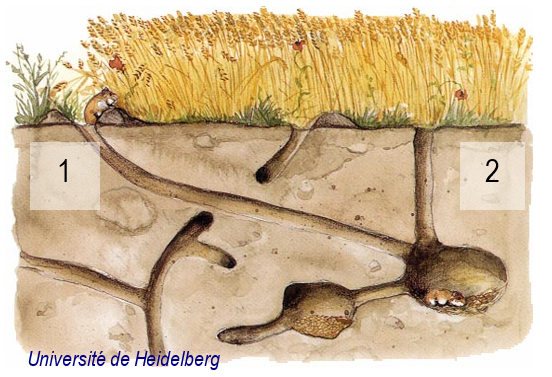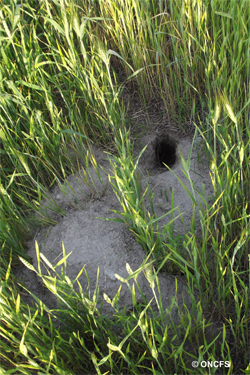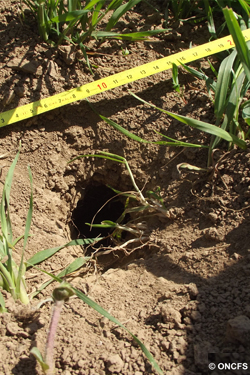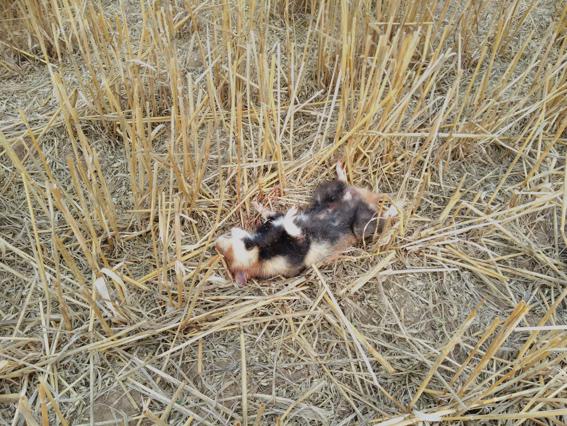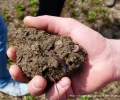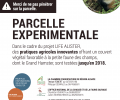How to recognise the signs that European Hamsters are present
1 juin 2018The European Hamster is an animal that hardly ever goes out during the day and spends most of its time in its burrow. It is difficult to spot, however there are some signs that confirm its presence.
The burrow
-
A burrow has one or more entrances from 6 to 9.5 cm in diameter, spaced between 30 cm to 2-3 m apart
-
The various burrows are spaced at least 8 to 10 metres apart
-
There are often a greater number of escape tunnels than main entrances
1: Main entrance
- With mounds of earth
- Frequent traces of plants
that have been eaten
2: Escape tunnels
- With no mounds of earth
- With or without traces of plants that have been eaten
The hamster droppings are:
-
Brown in colour
-
Almost 1 cm in length
-
An oval shape
-
Found on mounds or loose earth
Other traces
Fur or the bodies of dead hamsters can sometimes be found.
If you find the body of a dead European Hamster, do not touch it but contact the ONCFS (French National Hunting and Wildlife Agency)
EspèceProtected species, do not disturb
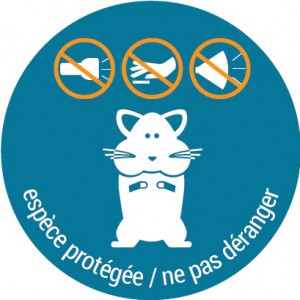
European Hamsters are wild animals. In contrast to pet hamsters that like human company, the presence of humans is stressful for wild animals. No-one should venture near the burrows or try and touch these animals.
Distinguishing the burrows of European Hamsters from those of other rodents
| Hamster(Cricetus Cricetus) |
Common vole (Microtus arvalis) |
Brown rat or sewer rat(Rattus norvegicus) | Water vole(Arvicola terrestris) | Wood mouse(Apodemus sylvaticus) | |
| Diameter of burrow | 6 to 9 cm | < 4 cm; make sure it has not been widened by predators | 6 to 8 cm | 5 to 8 cm | < 4 cm; make sure it has not been widened by predators |
| Depth of burrow | 45 to 55 cm in summer;1 to 2 m in winter | 20 to 40 cm | 40 to 50 cm | 30 to 60 cm | 10 to 20 cm |
| Numberand/or position of entrances | 1 to 10Matching the age of the burrow | A lot of food debris (food is eaten at the site as the animal does not have cheek pouches to transport it) | Tunnel network matching the same system of tunnels and loose earth clearly visible from one entrance to the next | Oblique access tunnels (horizontal) | Several entrances per m2. Tunnels are fairly horizontal |
| Position of earth mounds | At the base of the entrance hole | A lot of food debris (food is eaten at the site as the animal does not have cheek pouches to transport it) | Presence of earth mounds in front of the entrance (contrary to the water vole). | Many lumps of soil at the surface for a single burrow. Possible presence of a tunnel at the top of the soil with an oblique entrance. | A lot of food debris (food is eaten at the site as the animal does not have cheek pouches to transport it) |
| Droppings |

